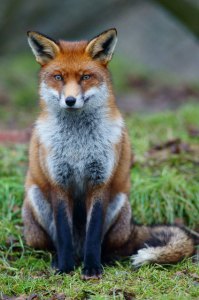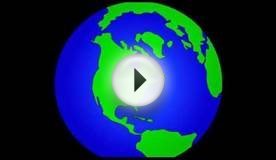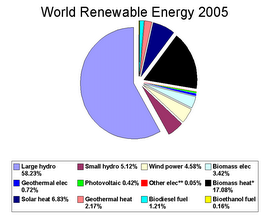Global warming and its effects on Animals
You can generally expect that animals will be affected by global warming in many of the same ways as humans in that they will have to  deal with extreme weather as well as changing weather patterns. However, humans have many ways to deal with these atmospheric alterations. We have homes that are electrically cooled and heated by natural gas. If crops are damaged in one area of the world, we have thousands of other sources for sustenance. All of this allows us to continue living and breeding as though nothing has changed. And for us, nothing really has (except maybe the duration of our morning commute thanks to inclement weather). But for animals, it is a different story.
deal with extreme weather as well as changing weather patterns. However, humans have many ways to deal with these atmospheric alterations. We have homes that are electrically cooled and heated by natural gas. If crops are damaged in one area of the world, we have thousands of other sources for sustenance. All of this allows us to continue living and breeding as though nothing has changed. And for us, nothing really has (except maybe the duration of our morning commute thanks to inclement weather). But for animals, it is a different story.
First you need to understand what global warming means. Yes, the polar ice caps are melting (a situation that is definitely bad for polar bears), but that doesn’t necessarily mean the whole world is getting hotter. The climate change brought on by global warming really just makes the weather that a locale already experiences more extreme. So summers are hotter, winters are colder, and storms are more frequent and intense. But what does this mean for the wildlife of the world?
Picture a herd of African elephants traveling through the Kalahari Desert. Over hundreds of years they have established migratory patterns (to the point that some of the major roadways that humans use to navigate the desert have been created by the animals that walk them year after year). These paths take them to watering holes and oases that will give them the sustenance they need to go on. But if the summers are hotter and longer due to global warming, those watering holes will dry up early and stay dry for longer, so that the elephants must travel on without any water, likely resulting in death. In short, it could disrupt migratory patterns that have existed for time immemorial.
And that’s not the worst of it. Global warming also has the potential to change the natality rate amongst animal species by disrupting breeding patterns. Animals need certain things within their habitat in order to go on living and breeding. In some cases, temperature fluctuations are not enough, in and of themselves, to cause harm. But the fact that they can affect sources of water and food are certainly detrimental to breeding. And most species require certain conditions for the places that they will raise their young. Since global warming has the potential to radically alter a habitat, it could result in more animals dying, fewer breeding, and a lot of endangered species.This is one of the many reasons that finding global warming solutions is critical to the survival of all. Humans may not bat an eyelash when wildflowers or certain species of squirrels go extinct, but it’s called a food chain for a reason. If enough plants and animals start dying off, eventually the changes will work their way up the chain until humans are threatened. Unfortunately, it seems that most humans don’t have a long-term sense of self-preservation (we are, after all, the ones responsible for global warming in the first place). But bit by bit, people are beginning to do their part to cut greenhouse gas emissions. Let’s just hope it’s not too little, too late for ourselves and the animals we share this planet with.
- play 1win predictor today


 Renewable energy is energy which comes from natural resources such as sunlight, wind, rain, tides, and geothermal heat, which are renewable (naturally replenished). About 16% of global final energy consumption comes from renewables, with 10% coming from traditional biomass, which is mainly used for heating, and 3.4% from hydroelectricity. New...
Renewable energy is energy which comes from natural resources such as sunlight, wind, rain, tides, and geothermal heat, which are renewable (naturally replenished). About 16% of global final energy consumption comes from renewables, with 10% coming from traditional biomass, which is mainly used for heating, and 3.4% from hydroelectricity. New...